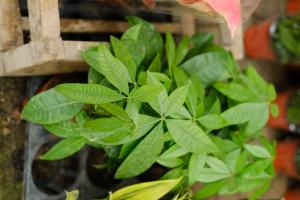Introduction
Collards are a popular leafy green vegetable in the United States, prized for their tender leaves and ability to thrive in various climates. If you live in Zone 8 and are considering planting collards, it is essential to know when to plant them to ensure a successful harvest. This article will explore the best times for planting collards in Zone 8 and provide some helpful tips for growing them.
Understanding Zone 8
Before discussing when to plant collards in Zone 8, it is essential to understand what Zone 8 means. The United States Department of Agriculture (USDA) has divided the country into 13 planting zones based on their minimum winter temperatures. Zone 8 typically experiences winter temperatures between 10 and 20 degrees Fahrenheit (-6.7 to -12.2 degrees Celsius) and can enjoy a long growing season in the spring and fall.
When to Plant Collards in Zone 8
The best time to plant collards in Zone 8 is in the early spring or late summer to early fall. In the early spring, collards should be planted four to six weeks before the last frost date in your area. In Zone 8, this usually falls around late February or early March.
If you miss the early spring planting window, you can also plant collards in late summer to early fall for a second crop. Plant them 85-100 days before the first expected frost date in your area, which is typically around mid-November.
Tips for Growing Collards
Before planting collards, it is essential to prepare the soil. Collards prefer a slightly acidic soil with a pH range of 6.5 to 6.8. Add compost or well-rotted manure to the soil to improve its texture and nutrient content.
Collards require regular watering, especially during dry spells. Water them deeply once a week, or more frequently in extreme heat. Mulching around the plants can help retain moisture and suppress weed growth.
Collards are relatively pest- and disease-resistant, but they can be prone to cabbage worms and aphids. Keep an eye out for small holes in the leaves, indicating the presence of cabbage worms. You can pick them off by hand or use an insecticidal soap to control the population.
Conclusion
Collards are an easy-to-grow vegetable that can thrive in Zone 8's moderate climate. Plant them in early spring or late summer to early fall to ensure a bountiful harvest. Remember to prepare the soil, water regularly, and keep an eye out for pests. With a little care and attention, you can enjoy the tasty and nutritious benefits of collards in your garden.

 how many times do yo...
how many times do yo... how many planted tre...
how many planted tre... how many pine trees ...
how many pine trees ... how many pecan trees...
how many pecan trees... how many plants comp...
how many plants comp... how many plants can ...
how many plants can ... how many plants and ...
how many plants and ... how many pepper plan...
how many pepper plan...





























